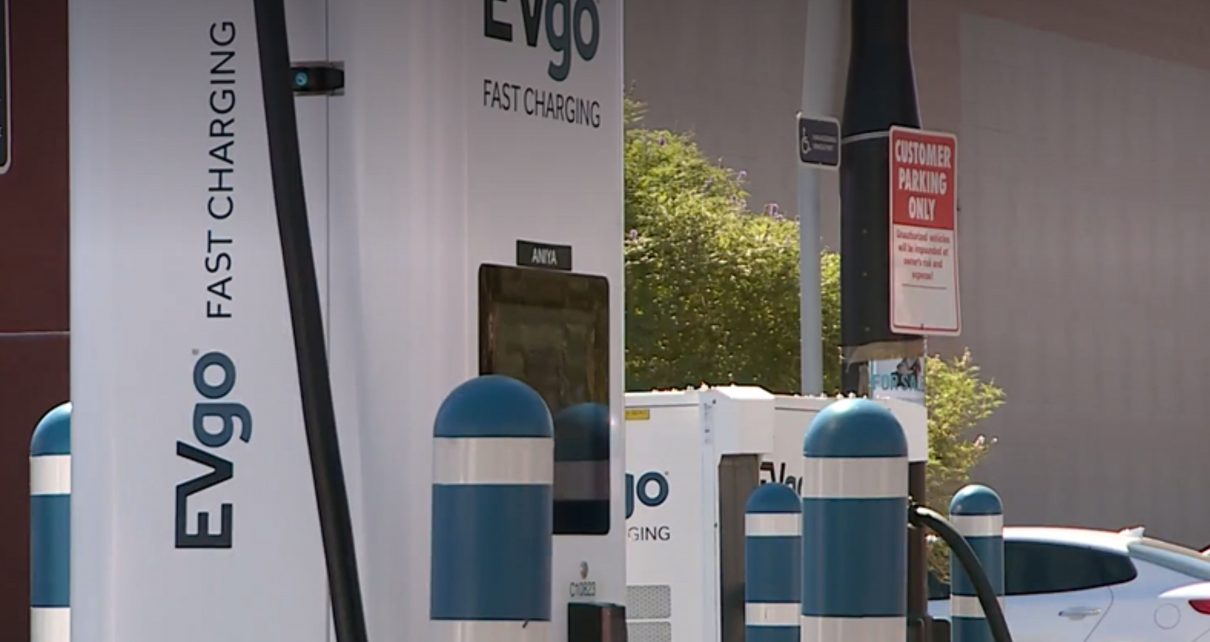
EV Infrastructure Law Might Require Charging Capability in All New Constructions
By TheNevadaGlobeStaff, December 20, 2022 5:47 am
LAS VEGAS, Nev. (702 Times, NV Globe) – If EV charging infrastructure becomes Clark County’s newest demand on Tuesday, Nevada’s green goal of being 50% sustainable energy by 2030 might get a boost.
On Tuesday morning, Clark County Commissioners will review and perhaps adopt on a proposed rule that would require most new developments to include charging stations for electric vehicles. The subject first appeared in commissioner chambers in April 2021, when officials addressed how to enhance air quality and public health while lowering GHG emissions.
Clark County Department of Environment and Sustainability Director Marci Henson stated that since then, all local municipalities, appropriate state agencies, development communities, and environmental groups have worked to establish the final ordinance commissioners will review on Tuesday.
“We want to make sure that we have the infrastructure ready for when that market transformation takes place, and that people feel confident that they can get from place to place and they’re not going to run low on their battery,” Henson said inside the Clark County Government Center Monday afternoon.
Different sorts of projects would need varying amounts of infrastructure, which would be activated at certain levels of on-site parking.
For example, government buildings with 50 or more parking spots would require 25% EV charging capability and 3% EV charging stations, whereas office parks, retail, and shopping complexes with 100 or more parking spaces would require 10% EV charging capability and 3% EV charging stations.
However, the expenses of doing so would be borne by the developer, which agencies have openly stated is a hardship in light of rising construction prices.
According to the meeting agenda, Clark County School District Interim Chief of Facilities Mark Campbell stated, “The district is already in a state where every bond dollar spent on new schools and modernizations is critical, as there is currently a $6 billion shortfall in bond dollars available for required work over the next 13 years.”
Then there’s the question of whether Nevada’s electrical grid can survive the additional electricity demand.
According to Amanda Moss, Senior Director of Government Affairs for the Southern Nevada Home Builders Association, “given our current market conditions and unknowns about the potential impact of electrification on our grid’s capacity, we are cautious about any major shift in policy to ensure we strike the right balance between planning for the future and what could negatively impact access to the housing market and affordability.”
There is a risk of “over-regulation,” according to Rod Martin, Co-Chair of the NAIOP Southern Nevada Government Affairs Committee. He verified that he was a part of the original collaboration between agencies and the county, which resulted in a “scaled-down” version of what it was previously.
However, he feels that issues remain.
“There are potentially significant costs depending on how an ordinance may take its final shape. There’s practicality issues from the standpoint of commercial development,” Martin said during a virtual interview Monday morning. “I think in a lot of those commercial applications, it is applicable. Where you just start getting questions is, should it be everywhere? And should you have a requirement in warehouse facilities? Industrial facilities? Office facilities? And so forth.”
When addressed financing concerns to the county department director, Henson said the ordinance is “coming at a good moment. The Inflation Reduction Act was just enacted by Congress, and there are several tax breaks for developers that wish to build this type of infrastructure. Then we’re seeing an increase in rebates and incentives from power providers.”
She went on to say that based on the original partnership, the additional expenditures would amount to less than 1% of the entire cost of the project. According to Clark County data, developers save $2,040 to $4,635 per place as compared to retrofitting parking spaces with these capabilities after completion.
She also stated that developers would be able to request an exception or alternative to the code through a waiver that will be reviewed by county commissioners or the head of Clark County’s Department of Comprehensive Planning.
Henson said the rule may go into force between the spring and summer if it is adopted on Tuesday. In addition, Assembly Bill 44 would increase financing for similar charging capabilities in low-income houses and areas in the new year.
The Clark County Board of Commissioners meets in the Clark County Commission Chambers at 9 a.m. on the first and third Tuesdays of each month.
Credits: 8NewsNow
Copyright 2022 702 Times, NV Globe. All rights reserved.
- Record Unemployment Among College Grads Exposes Democrats’ Failed Promises And Nevada Is Paying the Price - December 1, 2025
- Steak for Congress, Scraps for Nevadans: Inside Democrats’ Donor-Funded D.C. Lifestyle - December 1, 2025
- Stabbing Reported at Sunset Park in Central Las Vegas Valley - November 30, 2025



